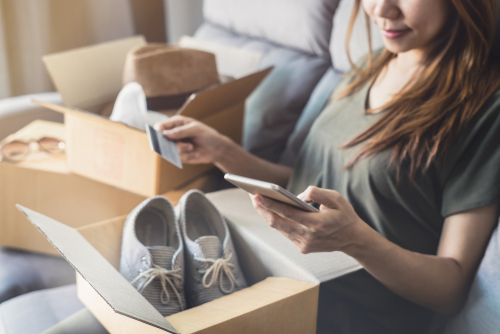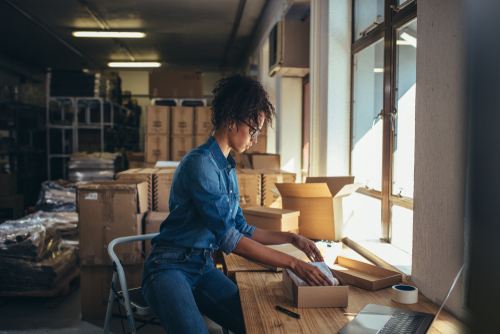June 8, 2021
Three Surprising Ways COVID-19 Has Changed Online Shopping Forever

The ripple effects of COVID-19 have been felt worldwide, with national lockdowns, nonessential retail restrictions, and the risk of catching the virus stopping even the most avid shoppers in their tracks. Instead, consumers have turned to e-commerce platforms to sate their spending needs, with IBM noting how businesses have accelerated online shopping trends by up to five years.
Read on to discover three ways consumer shopping has changed in the face of COVID-19 and how to prepare your brand so your sales can continue unabated.
Online shopping boom: the new normal
With the onslaught of COVID-19, most physical stores have been periodically closed as countries grapple with lockdown in various phases. But rather than spelling an end to shopping, the pandemic has contributed to a surge in e-commerce transactions. Worldwide, e-commerce businesses have cited a 21% increase in online orders, with almost half of all consumers confirming they prefer to buy products in online shops rather than in-store.
While not all businesses have benefited from this online shopping craze – namely there’s a divide between nonessential and essential retail businesses – most brands are profiting from this paradigm shift in retailing.
Some prominent changes to the online shopping landscape include:
- The COVID-19 pandemic has sped up the move to online shopping
- Stores are morphing into mini-warehouses, scrambling to fulfill a massive surge in online orders
- Retailers are investing in opening smaller locations away from malls, countering shopping mall restrictions
Three ways online shopping has changed

When accounting for consumers moving toward online shops, studies show a cosmic shift in consumer behavior. According to a 2020 study published by Facebook IQ, online shopping decisions are increasingly driven by convenience, delivery options, values, and personalization.
1.Convenience, safety, and reliability prioritized
Factors like delivery times, delivery options, and the reliability of stock items and inventory shortages are increasingly informing consumers’ buying decisions.
From a business standpoint, it’s essential to be aware that any delays or barriers that block a shopper from successfully buying a product can cause them to buy elsewhere.
What’s more, instead of popping into a crowded department store to shop, consumers increasingly prioritize safety, taking their shopping ventures online. One recent report released by McKinsey shows that during 2020’s holiday season, shoppers turned to apps and websites in staggering numbers, taking advantage of businesses that offered a click-and-collect option for safety reasons.
2.Brand loyalty shaken up
Nowadays, consumers are trying out new brands, and staying loyal to one true brand seems to be a thing of the past. In particular, Periscope’s Retail report shows how 40% of consumers have tried new brands during the pandemic, and only 12% of consumers said they would shop from the same brands again.
So how to ensure consumers stay loyal to you? Start by personalizing your marketing campaigns and ramping up your social media engagement. Winning new customers and keeping existing customers depends on how you communicate and present your services online.
3.Value-driven shopping behavior triumphs
As a result of COVID-19, more shoppers value a brand’s reputation, sustainability policies, and customer service than before. Indeed, Facebook’s IQ study shows how over half (56%) of survey respondents noted the importance of choosing brands aligned with their values. This suggests a window of opportunity for businesses to pivot toward a rebrand within the online shopping sphere.
Moreover, despite the economic impact caused by COVID-19, shoppers don’t seem to be exclusively motivated to score cheap deals. In an IBM report released in November 2020, 44% of consumers in the survey prioritized sustainability when picking a brand.
One thing’s for sure. It’s now up to brands to respond to the changing nature of consumer behavior. A key step is to think about how your brand’s mission fits into helping alleviate social, environmental, or political issues.
How to adapt your brand to consumer’s changing needs

Here are some quick tips for adapting your brand, so it encompasses a tech-savvy, seamless e-commerce front:
- Invest in a solid online e-commerce platform that takes user experience into account
- Align branding with values that matter most to your target audience
- Segment messaging to the right audience when promoting your products or services
- Identify and reduce frictions that could prompt your consumers to shop elsewhere
The future of online shopping
E-commerce companies and industry experts predict that the growing trend of online shopping is here to stay, irrespective of the pandemic. And as consumers’ appetite for easy, reliable, and safe ways to shop increases, businesses need to react quickly and change their strategic priorities and operations to meet this shift in consumer behavior.







